Many people, when it comes to fitness, talk about diet and exercise, which we know are important. But there are other things that are equally important.
I’ve learned through the years that improving health, getting more fit, releasing weight, etc., all really start with an internal journey. We’ve got to put certain things in place and reset some foundations in our life that will enable us to succeed in applying a good diet and exercise.
That internal journey is critical. In this article I’ll guide you through nine important aspects of that internal journey.
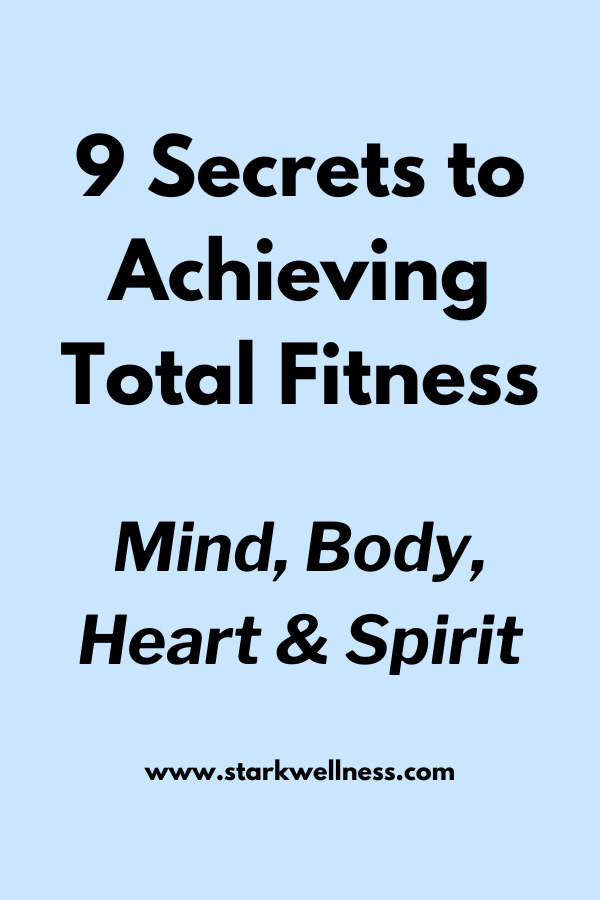
1. The Power to Imagine and Visualize a Better Life
Through life, outside forces and challenges, trials and “failures” can cause us to lose our ability to imagine that things could be better in our lives, that our health could be better.
Maybe once upon a time you imagined a bright, beautiful future, and you were inspired to move towards that future self. But now, maybe you find it difficult to see anything differently. Somehow hope and inspiration were stolen from you.
Anyone who wants to change something in their life must first be able to visualize their self differently, to imagine a better future.
You have to create a vision of yourself in your mind in 3 months, six months, one year, five years…. You have to begin to see what your future self might look like strong, healthy, vibrant, and active. Envision yourself pursuing your dreams, achieving goals, playing with your grandchildren, continuing your favorite sport for many years to come.
Create a Vision Board
Creating a Vision Board and posting it in a super visible spot can help you keep your goals and new visions top of mind every day. It’s a great way to begin reprogramming your mind toward success. Seeing those images all the time will open up your mind to also seeing solutions and realizing resources. Change will come naturally. Here is a tool to help you get started if you want to create a Vision Board.
Seeing that vision can inspire hope and allow you to see a pathway to achieve your goal. You’ll activate the prefrontal area of your brain involved in planning, decision making and problem solving and become motivated to begin taking action steps towards that vision.
So, it’s critical to change the way that we think and believe about ourselves and our future.
You have to believe that you can be successful.
You’re not going to get this assurance from a symptom focused health care system or the weight loss industry who want to sell you supplements and diet plans, ignore the challenges you face, and trigger guilt.
We face real challenges, confusion and bad news in health. We need to step back, reset and renew our mindsets, our belief systems, and our hope.
Need some help practicing SELF-CARE? Check out my email course RENEW! It’s a Good Start Guide to Help You Restore Your Body and Mind. You’ll get TONS of ideas for eating, exercising, sleeping, and just taking care of yourself well….including my Food-Mood Recipe Guide! Click HERE to see why you will love it.
2. Letting Go of Guilt
I did then what I knew how to do. Now that I know better, I do better. – Maya Angelou
Did you grow up in a culture that was unhealthy? Did your family have unhealthy habits or traditions around food? Did things from your past promote emotional eating?
Did you do what you were taught to do? Have you still been engaging in unhealthy patterns?
Now you can release any guilt you feel. And if you’re trying to lose weight, reverse diabetes, or improve your health in any other ways….you just have to.
You’re learning more, and it’s going to be easier for you to do better, make better choices, develop better habits.
You can give yourself a fresh start!
I’m not saying it’s going to be easy. You’ll face challenges, AND you’ll also experience successes! You’ll learn from the down times and do better. That’s part of the imperfect process of becoming successful.
It’s time to clean up the garden—clean up the body and mind from the past—without guilt. Recognize that you just have some work to do, and you CAN DO IT with little bits of effort over time.
When you see things coming up in your garden that you don’t like, you can think about the roots, where they came from, and pull them up and get rid of them. You can replace them with new seeds that will bring the harvest you desire for your life. And your harvest (your health and wellness) will improve every season, every year.
You’ll get better at answering questions like:
- What am I going to eat today?
- When am I going to sleep and wake up?
- How am I going to be active and get some movement in my day?
- How long will I sit at my desk today?
- How am I going to manage and release stress today?
- How am I going to heal and release emotional trauma?
- How am I going to build or improve relationships in my life?
- Where am I going to make connections or get involved in my community?
- What accountability sources do I have or need to bring into my life to help me succeed?
These are some of the new seeds that you’ll plant. And….gardens can grow quickly. It won’t take long for you start to see the rewards of your work.
Our bodies are super resilient and can respond quickly when we plant better seeds and make better choices.
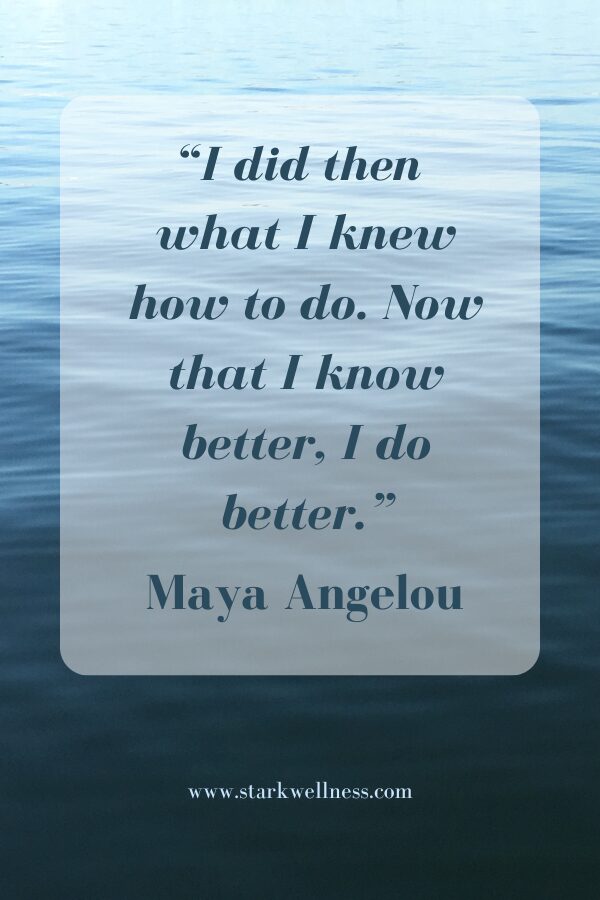
3. Understanding How Some Foods Hijack Our Brains
Our brains have reward centers that naturally respond to positive activities and accomplishments. And they also respond to hyper-stimulating sugar, salt, trans fats and other addictive substances in refined foods. Those addictive substances release dopamine, and over time, we develop tolerance. Then, it requires more sugar, fat, salt, etc., to stimulate the brain to get the same effect.
Other consequences of the over-stimulation include reduced serotonin, which depresses our mood, and increased inflammation of the brain, which produces anxiety and more depression. Also, the hunger centers in the hypothalamus become activated, causing us to become more hungry. We crave more but continue to feel unfulfilled and depressed.
No wonder we have lost the vision for a bright future.
Food manufacturers have studied cravings, and they design products to be irresistible, easy to eat, quick to melt in your mouth, and quick to be absorbed. You get that quick hit of dopamine, and then you crave more.
These poor science practices are depleting us financially, physically and mentally. It’s no wonder we have individual health problems and a health crisis in the United States and globally.
According to this Yale food addiction study, nearly 20% of people have a tendency towards food addiction. And that includes people who are overweight, underweight and even average-weight–some people just have a higher metabolism, but they are still in danger of developing diabetes, heart disease, cancer, etc.
Also, some people are more prone to food addiction due to underlying issues, such as emotional challenges and trauma, history of rejection, feeling controlled, stress, unfulfilled desires, etc…
But the good news is there’s freedom.
There’s freedom from food addiction, disease, inflammation, and mood swings.
And that’s why I became a professional life coach and holistic health coach, to help set people free. To inspire hope and help people feel more energetic–physically, mentally, emotionally and spiritually.
4. Realizing Food’s Real Place In Our Lives
Food is never going to fulfill our lives. It can bring us some pleasure, and it’s OK to enjoy it. We should enjoy it! But we need to realize that it will never fully satisfy us.
Here’s what food CAN do:
- bring nutrients and healing into your body
- reduce excess inflammation in your body
- rebuild and regenerate tissues, organs, and other parts of your body
- increase blood flow to your brain
- improve your cognitive performance
- normalize your blood-sugar
- provide you with lasting energy
- positively affect your mood
And it can do these things quickly. Our body and brain are flexible and resilient.
5. Understanding How Movement Affects the Mind
With movement the body releases feel good hormones (endorphins, serotonin and dopamine) and a protein in our brain called BDNF (Brain Derived Neurotrophic Factor). This mix increases your brains capacity to create new neurons and neural connections.
So….with more movement throughout your day, you’ll be sharper and better able to learn new things and create lifestyle changes.
Try to move your body somehow every 1-2 hours. Sometimes just get up and stretch, take a call on your feet, walk around your office building, do mini-workouts, play with your kiddo, etc. Sometimes take longer walks, include more vigorous exercise, attend a spin class, etc.
6. Seeing the Connections Between Our Minds and Bodies
That agility in our brain is also in interaction with our thoughts, beliefs and choices. So we need to be cautious about other inputs besides food.
What are we focusing attention on? What are we watching and listening to? Especially about ourselves? What are we hearing from other people and from the media? What are we saying to ourselves?
All of these things also go into and affect our brain. Repeated thoughts and repeated actions create neural networks in our brain and become automatic.
Do you ever find yourself doing something or thinking something, and you don’t know why or remember how you even started? Do they seem like subconscious actions that you “just do”? Stopping by the break room vending machine, biting your nails, saying mean things to yourself in the mirror?
Fortunately, just like the brain and body can respond to healthy food, they can also respond to healthy lifestyle changes. We can create new neural pathways with new thoughts, beliefs and actions.
We can grow, learn new things, make new choices, and generate new automatic pathways that lead to success in your life.
You can become healthier in mind, body, heart and spirit.
And you can change!
You can change your mindsets and beliefs, our emotional responses, and the ways that we’ve always done things.
How?
You begin by repeatedly doing something, one little thing, differently.
Start thinking something different, changing one experience.
You start pruning the garden and releasing some old thoughts….lies that we used to believe about ourselves, lies from naysayers, lies from the diet industry.
You stop listening to or saying things like: “I just can’t do it”, “You don’t have enough willpower”, “I’m a failure”, “It’s always going to be like this”.
Instead you say: “I’m not going to believe those things anymore. I won’t be taken advantage of. I’m learning more, and I’m going to do better. I’m going to begin repeatedly doing positive things, thinking positive thoughts, changing how I speak to myself, making different choices, spending time in new places, shopping at different stores, trying different activities, joining different communities, connecting with different people.”
As you begin doing those things, you’ll grow new connections in your brain. You’ll create a new foundation of proteins–like little bricks–and actually change the structure of your brain.
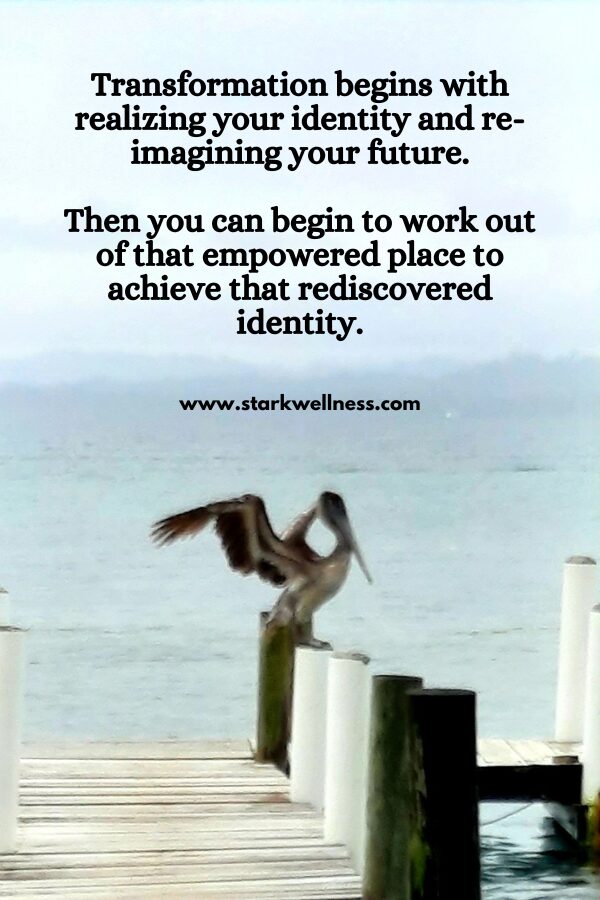
7. Getting Out of a Pattern of Stress
Stress patterns (e.g. emotional eating), for many people, become wired in throughout a lifetime of living with stress, attempting to pacify pain and relieve anxiety, or grasping for control. Amid personal, relational, career, financial and global challenges, one can feel desperate for just a little bit of pleasure.
And it does feel better temporarily, but for lasting satisfaction the underlying issue has to be dealt with. Circumstances must change. Thoughts, beliefs and actions have to change. Our imagined vision for the future has to change.
But freedom can be found by laying down new bricks, creating new systems and pathways in the brain, and breaking some stress cycles.
Mindfulness is a tremendous resource for this.
Being mindful is about bringing awareness to your daily activities so you can become less reactive and operate with a more positive state of mind. Through mindfulness you’ll stay more in line with your new positive intentions.
You can read about my favorite laid-back mindfulness and meditation practices here.
Also, when a stressor or trigger first arises, asking yourself some of these simple questions can help:
- Why am I doing this right now?
- Why am I eating this right now?
- What emotions am I feeling?
- Why am I reaching for this ___?
- Does this line up with my vision of my future self?
Asking these questions can help you pause enough to begin processing the automatic behavior, discovering underlying drivers, and putting a stop to the hijacking. You can start breaking the cycle.
Another thing that will help is exploring your identity.
You’re not who anyone told you that you were in school or in childhood. You’re not who anyone from work, or on social media, or the diet industry told you that you are.
You are a smart, talented, valuable person with amazing things to contribute to this world. Realizing your worth and getting in touch with your true identity will empower you in meaningful ways.
You’ll have a purpose behind starting your day with a healthy breakfast, exercising, managing your emotions, cutting out stressful things from your life, etc…
Ask some of these questions:
- Who am I?
- What are the skills that I need to make a change?
- Why do I want to make a change?
- How do I do it?
- How do I prepare healthy meals?
- What type of exercise would I enjoy?
- Which mindfulness or meditation activity resonates with me?
- Who can help me?
True transformation begins with realizing your identity and re-imagining your future. Then you can begin to work out of that empowered place to achieve that rediscovered identity.
You might like to go through my 25 Powerful Questions to Develop Your Self-Worth.
No matter how far down a particular road you think are, you’re only one step away from choosing something different. One turn and one step in a new direction. Not a leap, not a perfect pirouette….just one little step, followed by another and another. It’s a process.
Again, the process begins with imagination and dreaming. Dreaming about being healthy and being capable of doing what you want will activate that frontal part of your brain involved in planning. You’ll cultivate hope and enthusiasm for yourself, and you’ll feel empowered.
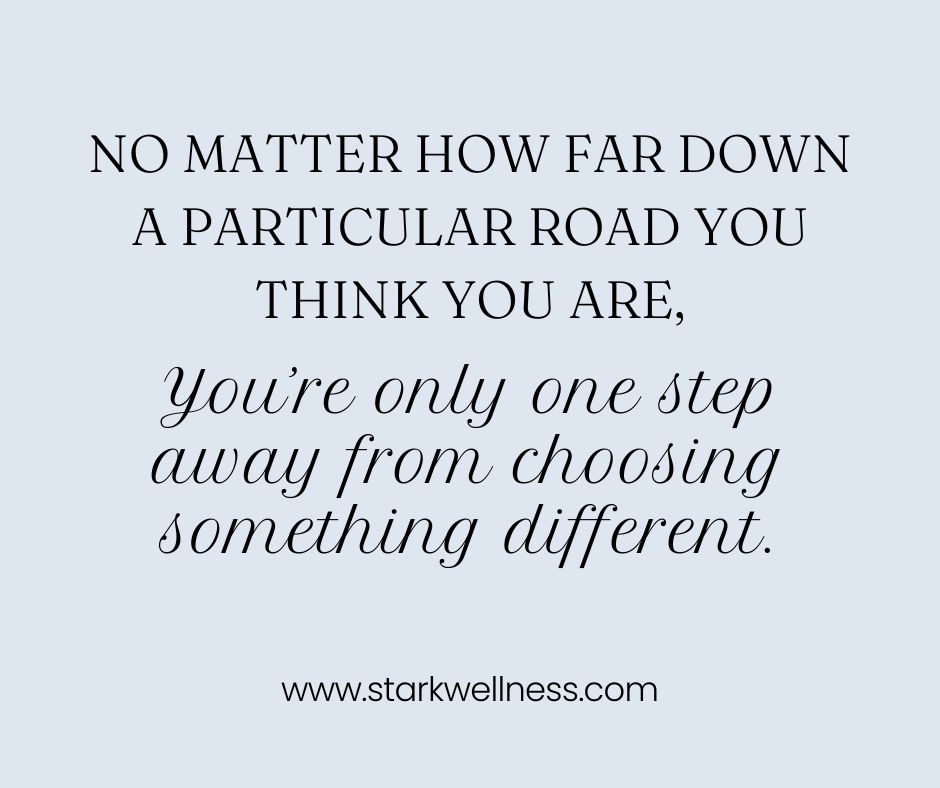
8. Creating an Environment for Success
Have you ever moved some furniture around and kept trying to sit in the spot where your favorite chair used to be? Or maybe you’ve rearranged a few drawers in your kitchen, and for a while you kept grabbing for a fork where you now keep spatulas.
Eventually you started heading in the right direction to relax in your favorite chair. Soon you got used to reaching for a fork in the new place.
You changed the environment and naturally forced yourself to change and make different decisions.
Whatever new habits you want to create, you can help your brain change and fuel your success by changing your environment.
- Enjoy a decluttering day.
- Batch cook for the week ahead.
- Purchase a super cool water bottle.
- Make unhealthy foods more difficult to access.
- Put fruits and vegetables and other healthy snacks in prominent places.
- Keep a water filter with a spout on the edge of the counter.
- Lay a yoga mat and kettle bell on your porch.
- Keep your journal and a favorite pen by your bedside.
- Turn off social media notifications.
- Post that Vision Board on a kitchen cabinet door.
These are just a few examples of how to begin changing your environment.
Similarly, you can change the environment of people you surround yourself with.
Who supports you, encourages you, and gently holds you accountable? Being selective about who you spend time with is an environmental shift that can lead to success.
Also consider the environments in which you step into outside of your home.
Maybe you want to start skipping the Sunday barbecues if you always leave feeling drained instead of uplifted. Are you meeting the team for drinks after work because it really helps you unwind and connect with your coworkers, or because you are afraid of feeling rejected if you don’t go? A hard question, I know. But you are making changes in your life, and new doors will open for you if you start putting yourself in new situations.
NOTE: I know it can be difficult to create an ideal environment at home when your family may not all get on board. If you feel alone in your home, it can help to have someone beside you who will offer support and accountability. Find a friend, an extended family member, a community group, or a coach like me to join you on your journey and help you get over any obstacles.
9. Remembering Gratitude
Don’t underestimate the power of gratitude to transform your brain and life. Gratitude activates those same reward centers of your brain that I mentioned earlier, increasing the feel-good hormones, dopamine and serotonin.
And an attitude of gratitude helps you make better choices. It helps your brain restructure to thinking more positive thoughts, reducing fear and anxiety, and reducing the effects of stress.
Recounting a few things you are grateful for each day while practicing deep breathing can reduce your cortisol levels, blood pressure, inflammation and risk of depression. It can improve your heart rate and sleep patterns
With those physiological improvements, you’ll likely feel more like exercising, eating healthier, and making other positive changes. You’ll feel stronger in your quest to cut out things that are unhealthy in your life.
Your relationships will get better as you relate to people in your life with more emotional stability. And you’ll be more likely to maintain necessary boundaries for yourself.
- Start a meal-time practice of saying something out loud that you’re grateful for, and encourage your family to follow suit.
- Begin a morning gratitude practice, or end the day with thanks giving.
- Start a gratitude journal with words or pictures.
- All day long, look for things to be grateful for….little things….big things….any things that make you smile or touch your heart.
And also take measures to cut out negativity. Avoid complaining, limit negative media, learn to parent peacefully and to manage conflicts peacefully with your partner.
These practices will open up more space for positive experiences for which I know you’ll be grateful!
In conclusion….
Total fitness is possible. It’s achievable to live a healthy, vibrant life—mind, body, heart and spirit. And all you have to do first is allow yourself to imagine a different future.
It’s even more conceivable when you have support, when you have someone to walk alongside of you, cheer you on, help you weigh your decisions, offer guidance and suggestions, and gently hold you accountable to your own empowerment.
Don’t give up. Don’t carry shame or guilt any longer. Open yourself up to possibility and a new future.
And let me support you along the way.

Hi! I’m Jennifer, your life, love and wellness coach! I help men, women and couples figure out what’s keeping them from being happy and healthy so they can overcome those blocks and determine and implement steps to truly improve their lives, relationships, and physical and mental health. I’m a certified Professional Life Coach and Holistic Health Coach with a background in professional counseling. I’m ready to help you. jennifer@starkwellness.com
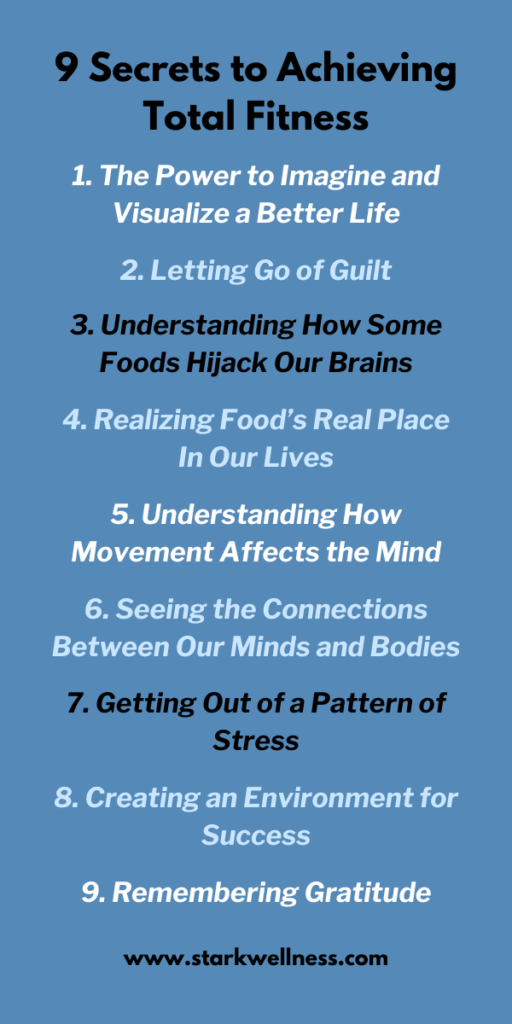
Carly Benton says
Hi Jennifer.
Thanks for the encouraging words.
It just what I need.
admin says
Hi, Carly! I’m so glad you found this encouraging. Thanks for letting me know.